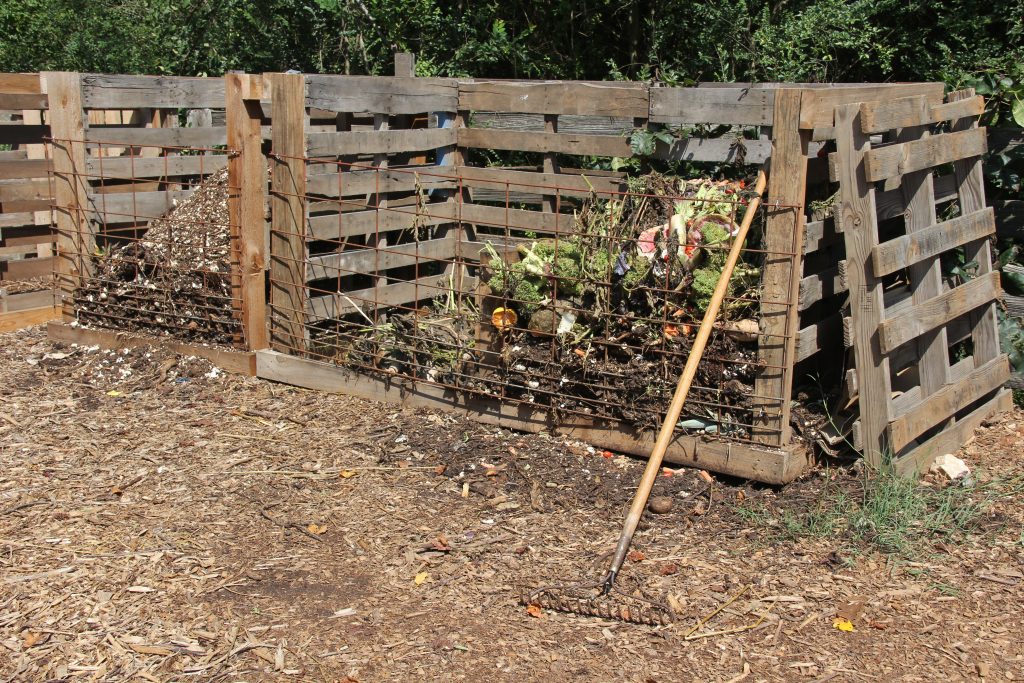
By Maria M. Lameiras for CAES News
With more time at home on many people’s hands these days, lots of yard work is being tackled, making this year’s International Compost Awareness Week, May 3 through 9, a perfect time to create a home composting system.
For the new composter, first find an ideal spot on your property to locate your composting pile or receptacle, says composting expert and Agriculture and Natural Resources Program Development Coordinator Amanda Tedrow, who represents University of Georgia Cooperative Extension’s Northeast District.
“If you are just starting out, go for the pile. The ideal minimum size for a compost pile is four by four by four (4 feet wide by 4 feet long by 4 feet deep). That is the right size to reach the temperatures needed for decomposition. A smaller pile will decompose at a slower rate due to lower temperatures,” Tedrow said.
Locate the compost pile downhill and away from vegetable gardens to prevent potential runoff from the compost pile, which could transmit plant diseases to the garden.
While heat is an important element to composting, the heat is generated within the composting pile, so it is not necessary to locate a composting system in direct sun. A compost pile located in direct sun may need additional supplemental water during the heat of the summer months.
Next, it’s important to add the right mix of materials to the pile.
“The general recommendation is to do two-thirds to three-quarters browns and one-third to one-quarter greens,” she said. Brown materials — such as dried leaves, sticks and old mulch — are a source of carbon, while green materials — such as grass clippings, vegetable and fruit scraps, coffee grounds and egg shells — are sources of nitrogen, both important for proper composting to occur.
Avoid adding any kitchen waste that contains meat, dairy products or greasy substances, Tedrow warns.
“Vegetable peelings, fruit rinds, stalks from broccoli, things like that are all fine. Something like peach pits might take a long time to compost, but they are perfectly fine to put in,” she said.
Moisture is essential, but a compost pile should only stay “as wet as a wrung-out sponge,” Tedrow said.
“In an ideal world, a compost pile should be turned when the temperature in the center of the pile starts dropping (below the ideal temperature of 130 to 160 degrees Fahrenheit). Most people don’t have a compost thermometer, so many composters will turn their pile every week to two weeks to keep the process moving,” Tedrow said. Compost thermometers are available in stores or online starting at about $20, she added.
If wildlife is a possible concern, an enclosed composting bin may be a better option, she said.
If you have a free-form compost pile and you are having a hard time keeping compost materials together, consider using a piece of fencing or other material to make a hoop around the pile to keep it contained, Tedrow added.
While creating a compost pile can, in time, produce material usable for gardening, the best thing about a compost pile is keeping unnecessary waste out of landfills, as landscape refuse, such as leaves, grass clippings and trimmings, accounts for up to 20% of the waste being placed in landfills.
In honor of International Compost Awareness Week, the UGA Extension office in Athens-Clarke County is offering a number of online and interactive events throughout the week, including a composting lecture on Wednesday, May 6, at 6 p.m. For information, go to facebook.com/AthensClarkeCountyExtension or visit athensclarkecounty.com/6542/International-Compost-Awareness-Week.
For more detailed information on composting, visit extension.uga.edu/publications and search for UGA Extension Circular 816, “Composting and Mulching.” For further assistance or to check for local composting week events, locate your local UGA Extension office at extension.uga.edu/county-offices.









